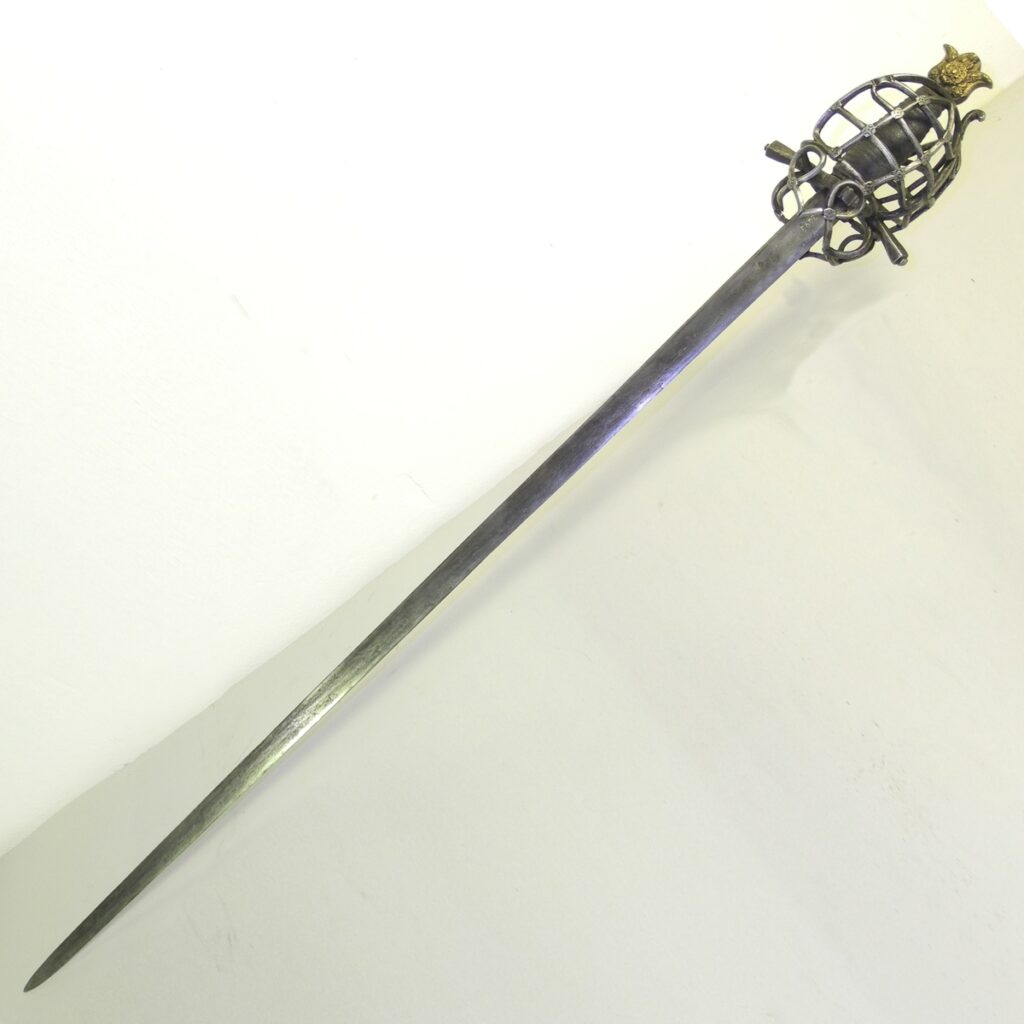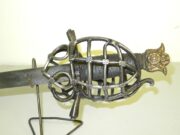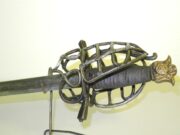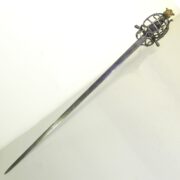
03 Schiavonna, late 16th century
Fotogalerie




The schiavonna, known from the 17th century, evolved from earlier swords the mass production of which in the 15th century made it possible to militarily secure the international rise of Venice as a major trading power. Several hundred of these swords are listed in the inventories of the Doge's Palace under the designation of schiavonna. The name of the sword, probably used much earlier, indicates that it was part of the armament of units comprising Slavic and Greek soldiers recruited under Venetian banners on Istria. They were called schiavi (slaves) because they inhabited regions that were among the main sources of slaves in the early Middle Ages.
The most typical part of the schiavonna is the hilt basket, forged from flat iron strips and leaves. They come from both arms of the guard, cross each other and form a regular cone that perfectly protects the hand. The lower bands of this basket are often axially curved on the hilt. Over time, the banded basket has become more and more articulated, which can serve as a good aid when dating swords.
The schiavonna is a weapon completely unique in its shape. The pommel of the hilt, usually made of brass, has the shape of a cat’s head with a central oval disc on each side. The straight blades were most often double-edged and only rarely do we see single-edged blades. They were smooth or had narrow grooves and measured 800-850 mm. These blades came from Italy, Germany and Spain.
Overall length 1 120 mm, blade length 972 mm, blade width 29 mm.
Aktuálně

Výzkum u českých krajanů v Chorvatsku

Československý deník sehrál v životě legionářů v Rusku velmi důležitou roli. Poprvé vyšel v prosinci 1917

Děkujeme za podporu pro válečné veterány. Sbírka DiGiMÁK vynesla 450 tisíc korun

Tak trochu zamrzlé spojení








